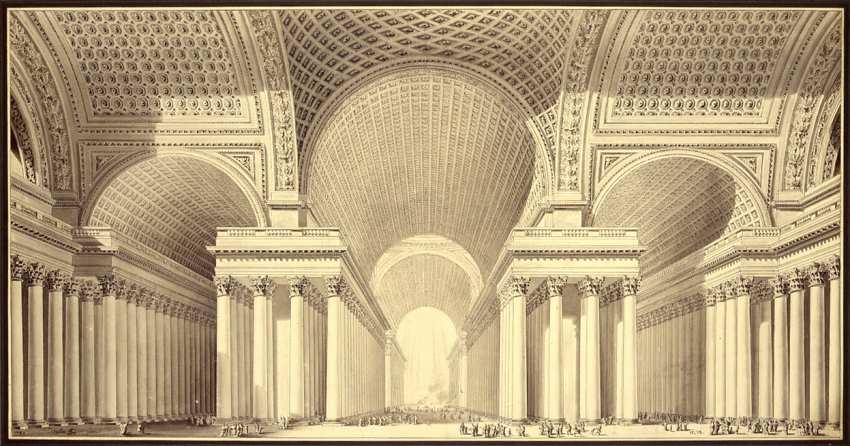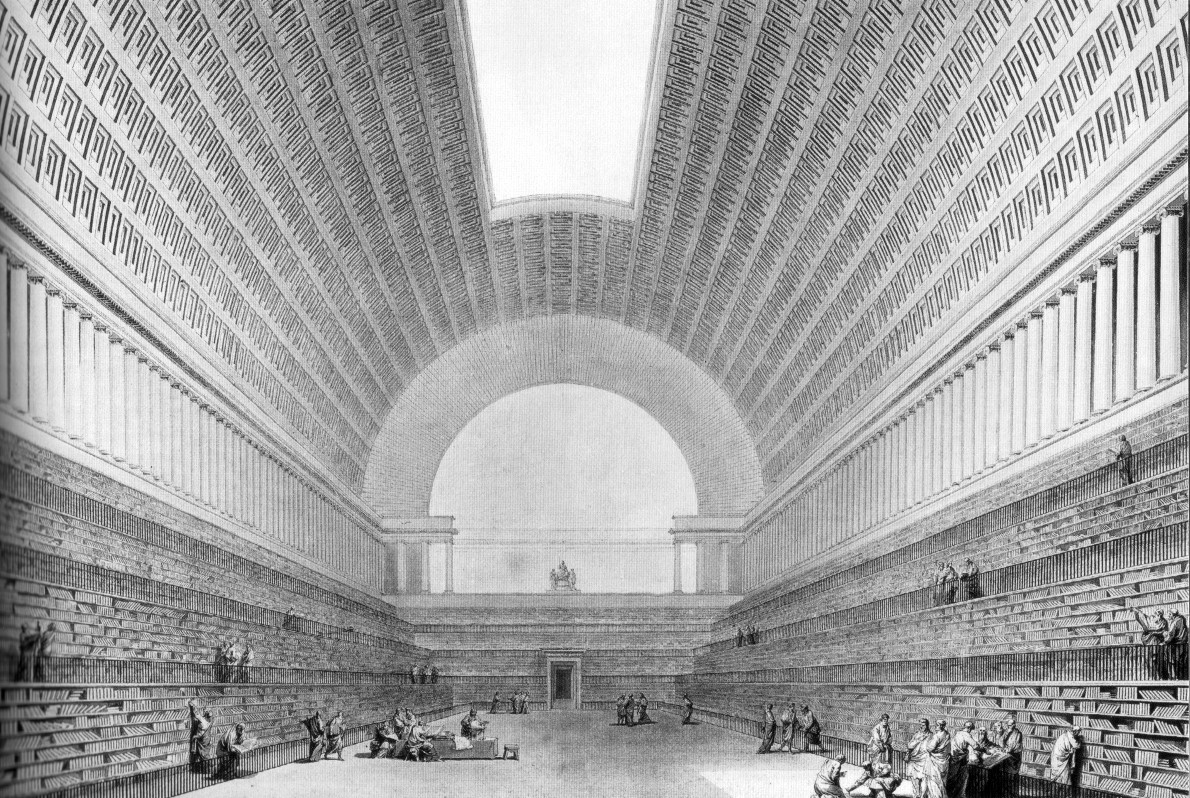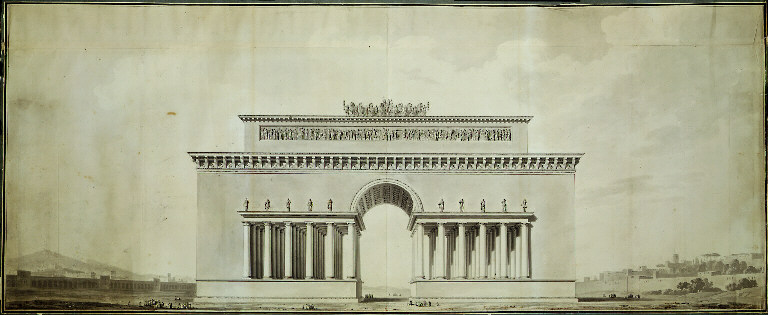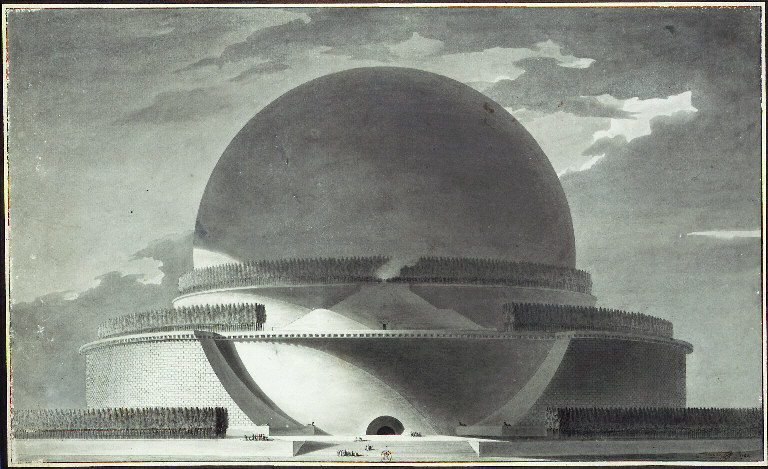<Back to Index>
- Naturalist Charles Robert Darwin, 1809
- Architect Étienne-Louis Boullée, 1728
- 16th President of the United States Abraham Lincoln, 1809
Étienne-Louis Boullée (February 12, 1728 – February 4, 1799) was a visionary French neoclassical architect whose work greatly influenced contemporary architects and is still influential today.
Born in Paris, he studied under Jacques-François Blondel, Germain Boffrand and Jean-Laurent Le Geay, from whom he learned the mainstream French Classical architecture in the 17th and 18th century and the Neoclassicism that evolved after the mid century. He was elected to the Académie Royale d'Architecture in 1762 and became chief architect to Frederick II of Prussia,
a largely honorary title. He designed a number of private houses from
1762 to 1778, though most of these no longer exist; notable survivors
include the Hôtel Alexandre and Hôtel de Brunoy, both in
Paris. Together with Claude Nicolas Ledoux he was one of the most influential figures of French neoclassical architecture.
It was as a teacher and theorist at the École Nationale des Ponts et Chaussées between 1778 and 1788 that Boullée made his biggest impact, developing a distinctive abstract geometric style inspired by Classical forms. His work was characterised by the removal of all unnecessary ornamentation, inflating geometric forms to a huge scale and repeating elements such as columns in huge ranges. Boullée promoted the idea of making architecture expressive of its purpose, a doctrine that his detractors termed architecture parlante ("talking architecture"), which was an essential element in Beaux-Arts architectural training in the later 19th century. His style was most notably exemplified in his proposal for a cenotaph for the English scientist Isaac Newton, which would have taken the form of a sphere 150 m (490 ft) high embedded in a circular base topped with cypress trees. Though the structure was never built, its design was engraved and circulated widely in professional circles.
The boiseries, still often dated in the mid 1760s, were discussed in the issue of L'Avant-coureur for 21 January 1761, and so must have been carried out about 1758-59. The Hôtel in the Marais district remodelled for Claude-Charles-Dominique Tourolle survives (the rue d'Orléans is now the rue Charlot) but the salon's boiseries and chimney pieces were removed in the mid-nineteenth century to a house in the rue du Faubourg Saint-Honoré now in the possession of the Cercle Interallié. Round-arched mirrors over the chimneypieces and centering the long wall in a shallow recess are disposed in a system of stop-fluted Ionic pilasters. White marble draped caryatid therm figures support the chimneypiece's tablette. There is a full architrave under a dentilled cornice. The white-and-gold ensemble would still have been fully in style in 1790.
The
Hôtel Alexandre or Hôtel Soult, rue de la Ville
l'Évêque, Paris (1763-66), is the sole survivor of
Boullée's residential work in Paris. It was built for the
financier André-Claude-Nicolas Alexandre. In its cour d'honneur four
Corinthian columns embedded against a recess in the wall plane create
an entry (now glazed). Flanking doors in the corners of the courtyard
have isolated architraves embedded in the wall above their plain
openings, while above oval bull's-eye windows are draped with the swags
of husks that became a common feature of the neoclassical manner. The
garden front has a colossal order of pilasters raised on the high
basement occupied by the full height of the ground floor. Boullée's
ideas had a major influence on his contemporaries, not least because of
his role in teaching other important architects such as Jean Chalgrin, Alexandre Brongniart, and Jean-Nicolas-Louis Durand. Some of his work only saw the light of day in the 20th century; his book Architecture, essai sur l'art ("Essay
on the Art of Architecture), arguing for an emotionally committed
Neoclassicism, was only published in 1953. The volume contained his
work from 1778 to 1788, which mostly comprised designs for public
buildings on a wholly impractical grand scale. Boullée's
fondness for grandiose designs has caused him to be characterized as
both a megalomaniac and a visionary. His focus on polarity (offsetting
opposite design elements) and the use of light and shadow was highly
innovative, and continues to influence architects to this day. He was
"rediscovered" in the 20th century and has influenced recent architects
such as Aldo Rossi.



